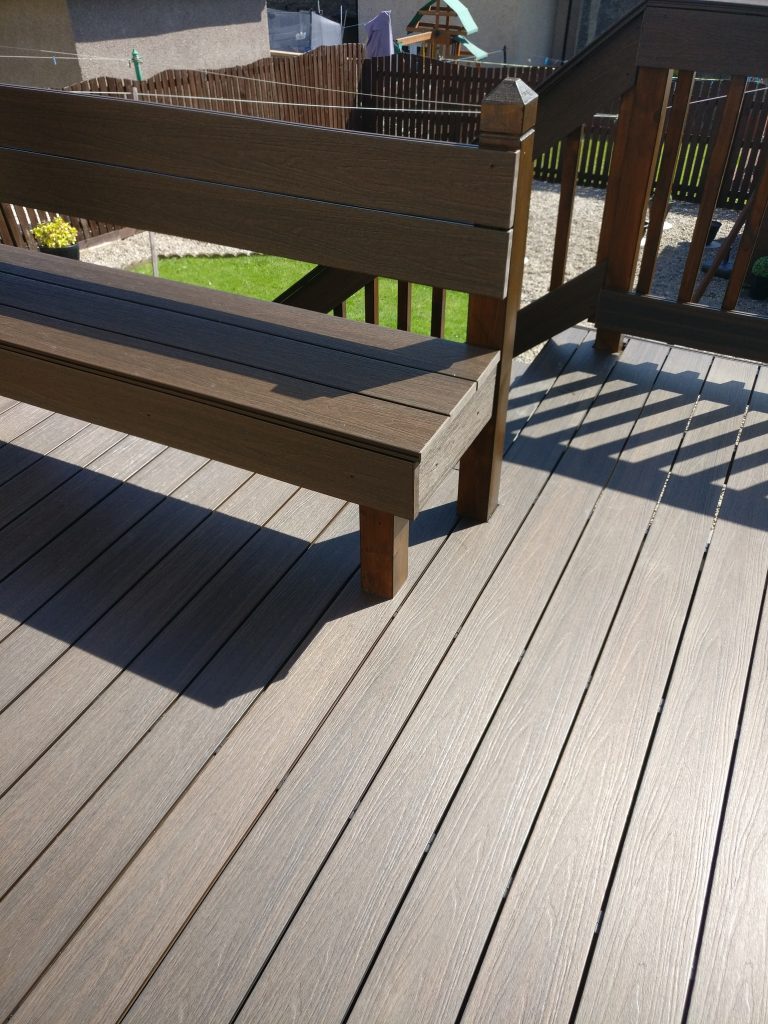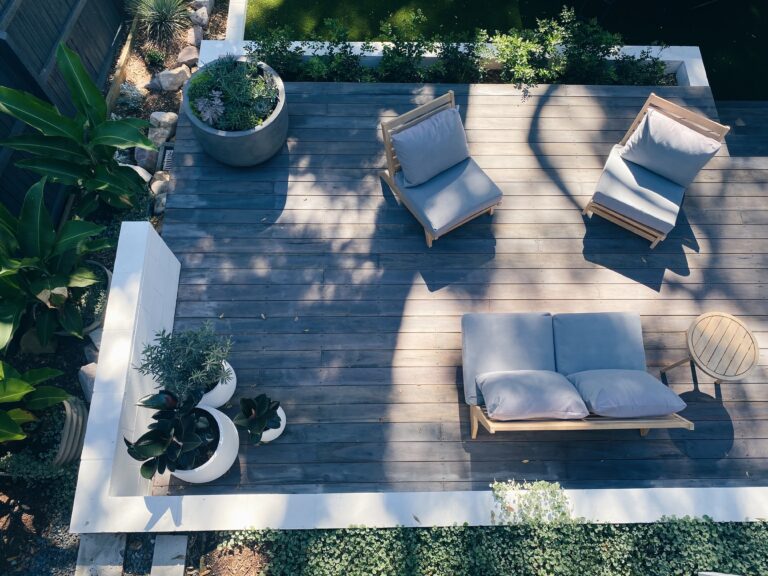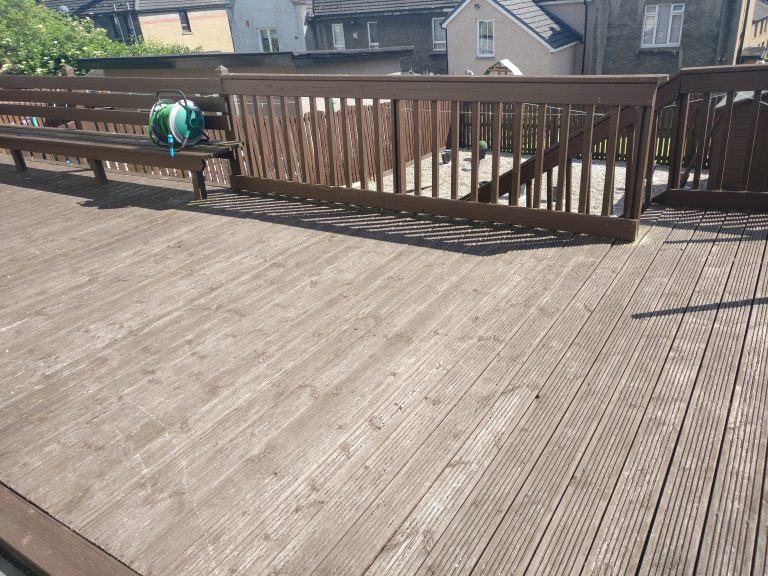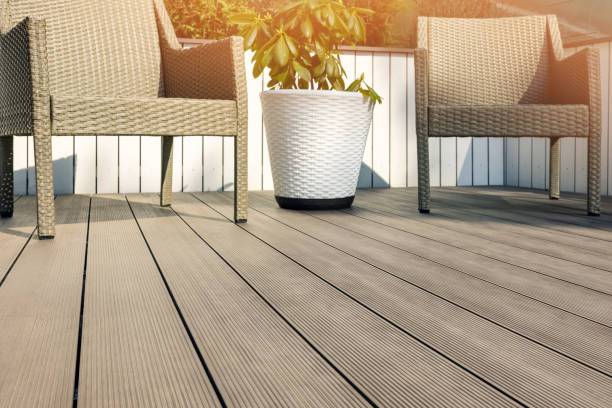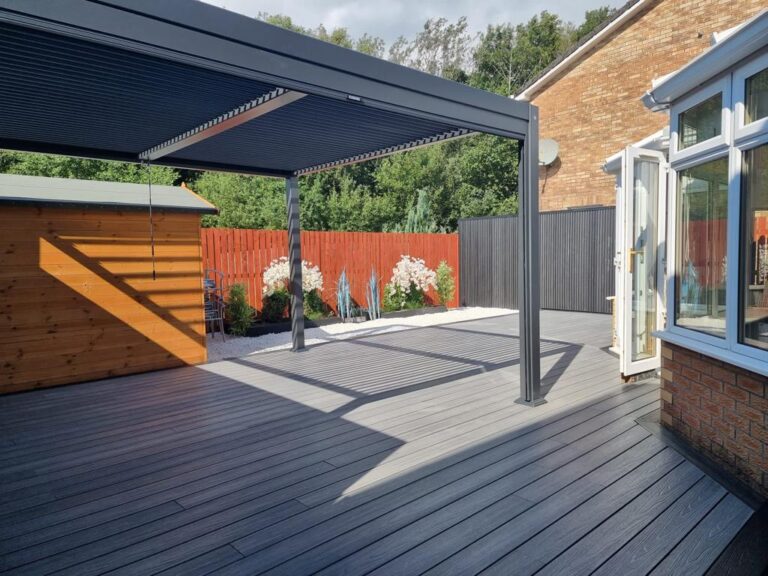Composite decking has become a popular choice for outdoor living spaces due to its durability, low maintenance, and eco-friendly qualities. When it comes to installation, many homeowners wonder if they should screw down composite decking, and if so, what are the risks and best practices. In this article, we’ll explore the benefits of composite decking, the potential risks of using screws, alternative methods for securing composite decking, and the factors to consider before making a decision.
We’ll provide essential tips for properly screwing down composite decking to ensure a sturdy and long-lasting outdoor space. Whether you’re a DIY enthusiast or a homeowner looking to understand the best practices for composite decking installation, this article will provide you with valuable insights and actionable advice.
Composite decking is a type of decking made from a mixture of wood fibres, plastic, and other materials, designed to mimic the appearance of natural wood while providing added durability and low maintenance.
Composite decking is a modern alternative to traditional timber decking, typically made from a combination of wood and plastic materials, offering enhanced moisture resistance and reduced susceptibility to expansion and contraction.
The manufacturing process of composite decking involves blending wood fibres and recycled plastic to create a durable, low-maintenance material. This composition not only makes it highly resistant to moisture, mould, and mildew but also reduces the risk of warping, splintering, and rotting that is often associated with traditional timber deck boards.
Composite decking is designed to withstand temperature fluctuations, minimising the risk of expansion and contraction, allowing for a more uniform and long-lasting installation.
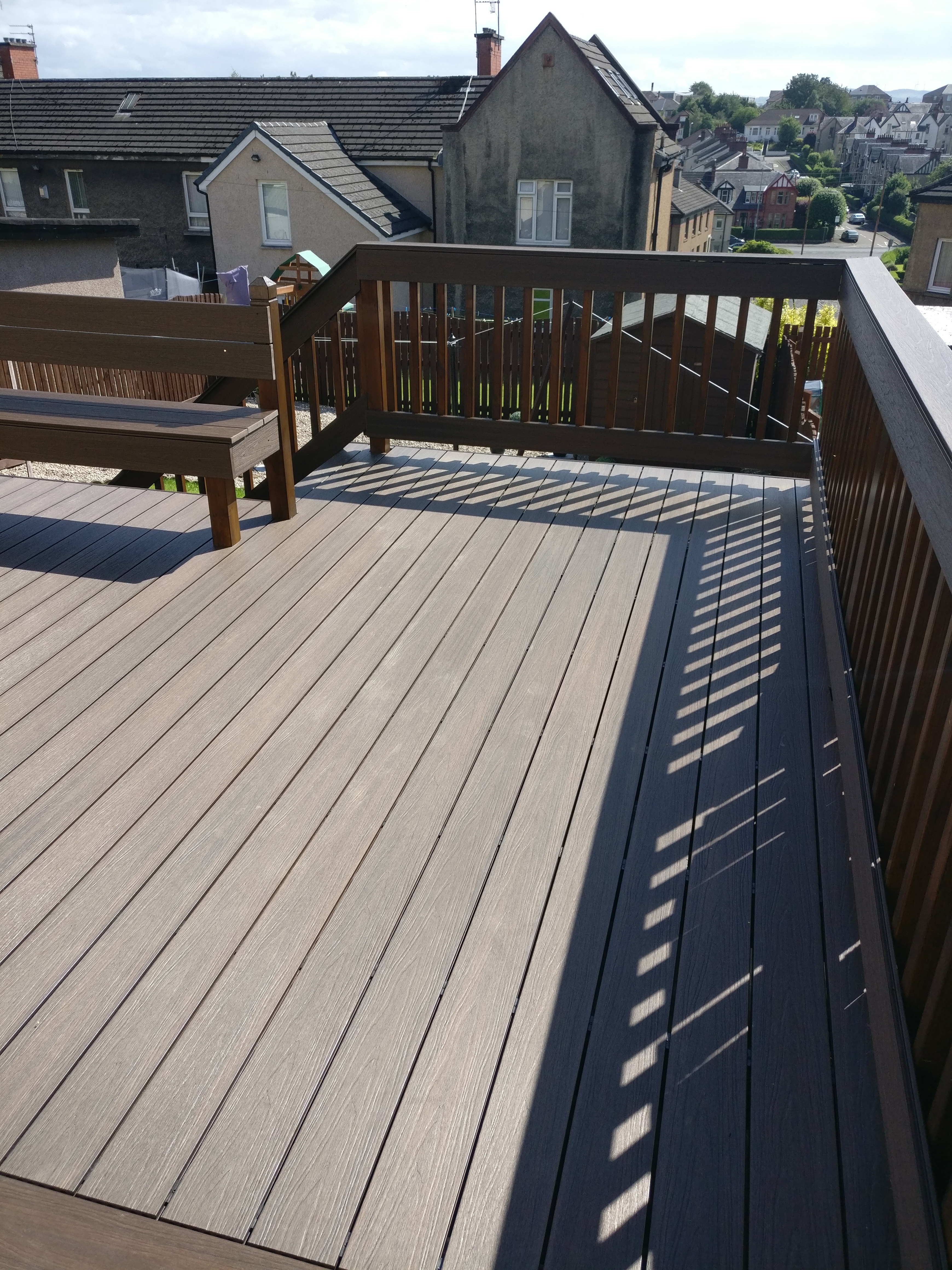
What are the advantages of composite decking?
Composite decking offers unrivalled stability and durability, making it ideal for outdoor use and withstanding varying weather conditions, making it a popular choice for DIY enthusiasts and homeowners seeking long-term performance and sustainable building materials.
Durability
The durability of composite decking minimises maintenance requirements and often comes with comprehensive warranties, providing homeowners with long-term support for their outdoor living spaces.
This level of durability ensures that composite decking can withstand various environmental stressors, such as harsh weather conditions and UV exposure, without deteriorating. With extended product lifespan, homeowners can enjoy their outdoor spaces without having to worry about frequent repairs or replacements.
The availability of warranties offers added peace of mind, as it provides assurance that the investment in composite decking is protected for an extended period.
Low Maintenance
Composite decking’s low maintenance requirements alleviate the need for frequent cleaning and care, contributing to extended product lifespans and simplified maintenance schedules for homeowners.
This type of decking material is resistant to rot, mould, and pests, reducing the necessity for regular upkeep. With composite decking, there’s no need for staining or sealing, and a simple occasional cleaning with soap and water is sufficient to keep it looking pristine. Homeowners can enjoy their outdoor spaces without the burden of constant maintenance, allowing for more time to relax and entertain. These features make composite decking an attractive and practical choice for modern households seeking a hassle-free outdoor living experience.
Environmentally Friendly
Composite decking presents an environmentally friendly alternative, offering sustainable features and benefits that align with modern eco-conscious preferences, whilst also acknowledging the associated pros and cons.
With a focus on utilising recycled materials, composite decking minimises the demand for virgin resources and reduces the environmental impact of traditional wood decks. Its durable nature results in less frequent replacement, further contributing to its eco-friendly profile.
Composite decking’s resistance to rot, mould, and pests eliminates the need for environmentally harmful chemical treatments, promoting a healthier outdoor environment. Despite these advantages, it’s essential to weigh the resource-intensive manufacturing process and potential for heat retention as potential drawbacks of composite decking.
A Variety Of Colours And Styles
The diverse array of colour options and styles available in composite decking allows homeowners to personalise their outdoor living spaces, meeting specific project specifications and brand preferences for composite decking.
With an extensive range of colours, from traditional wood tones to contemporary greys and rich earthy hues, composite decking offers an aesthetic versatility that complements various architectural styles. Homeowners can create customised outdoor living areas, incorporating unique design elements such as contrasting borders or multi-colour patterns. This allows for seamless integration with the overall look and feel of the property. Considering project specifications and brand preferences is crucial for ensuring a durable and attractive composite decking solution that aligns with the desired aesthetic and performance requirements.
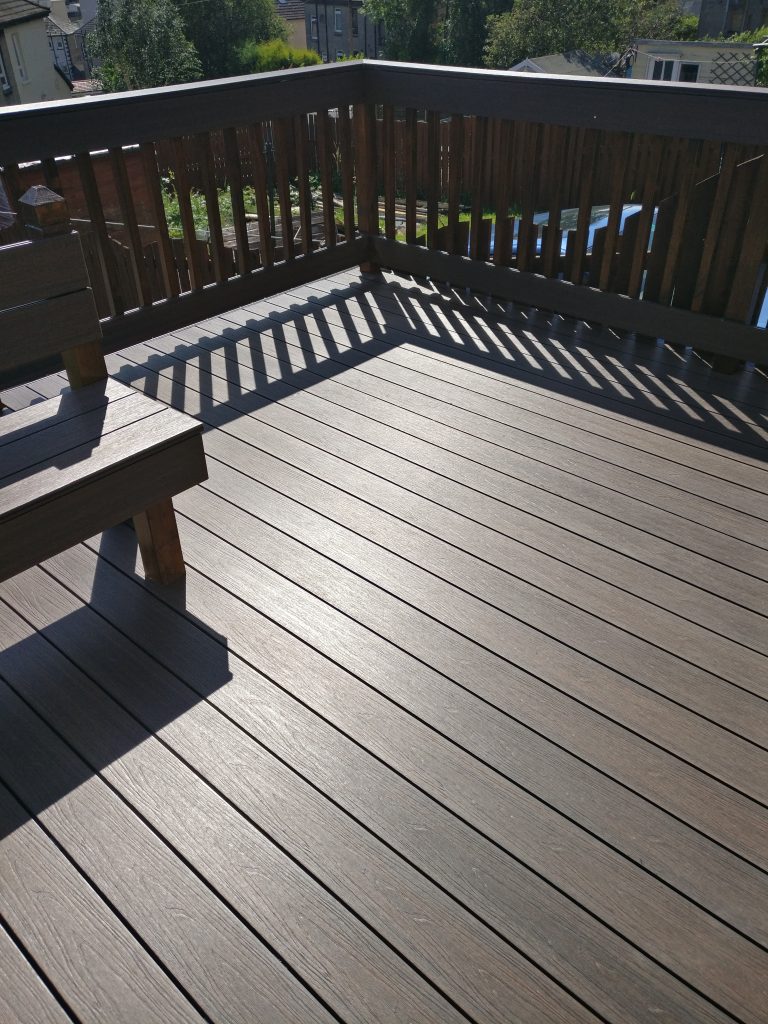
What Are The Risks Of Screwing Down Composite Decking?
When screwing down composite decking, there are inherent risks associated with fastening and fixing methods that may potentially impact the guarantee coverage of the decking material.
Improper installation and fastening techniques, such as over-tightening screws or using improper fasteners, can lead to structural weaknesses, warping, and voiding of warranties. Using fasteners that are not approved for composite decking can cause delamination or breakage. It’s crucial to follow the manufacturer’s guidelines for fastening the decking to ensure the long life and guarantee coverage of the product. Understanding these risks can help homeowners and contractors avoid costly mistakes and ensure a secure and durable deck.
Damage to the Decking
Improper screwing down of composite decking can lead to surface damage and compromise the overall stability, highlighting the importance of using the proper technique for fastening.
This can result in unsightly marks, raised edges, and potential weakening of the material over time. To avoid this, it’s crucial to utilise screws specifically designed for composite decking, as they help prevent surface damage and ensure a secure hold without protruding.
Proper screw placement and depth are also critical for ensuring the structural stability of the decking, guarding against warping and movement. By employing the correct screwing technique, homeowners can safeguard their investment, prolong the lifespan of their composite decking, and maintain its aesthetic appeal.
Voiding The Warranty
Inappropriate screwing down methods on composite decking may lead to the invalidation of manufacturer’s warranties, emphasising the need to adhere to recommended installation guidelines and best practices.
This vital aspect cannot be overstated, as improper screwing down techniques can cause structural issues, compromises in performance, and potential safety hazards. It is essential for individuals and professionals alike to carefully follow the manufacturer’s instructions to avoid any complications. Failure to do so may not only result in invalidating the warranty but also lead to costly repairs and put the safety of the entire structure at risk.
Therefore, it is essential to prioritise precision and accuracy in the installation process to uphold the integrity of the decking material.
How can you secure composite decking without screws?
Securing composite decking without screws can be achieved through the utilisation of innovative hidden fastening systems or specialised adhesives, offering alternative methods for a sleek and secure installation.
These methods provide not only visual appeal with a seamless deck surface but also contribute to the longevity and stability of the structure. Hidden fastening systems, designed to attach deck boards from below the surface, prevent splinters and surface cracking while maintaining a clean finish. Similarly, specialised adhesives offer a strong bonding solution that eliminates the need for visible mechanical fasteners, ensuring a clean and uncluttered appearance for the deck. By incorporating these securement methods, homeowners can enjoy a low-maintenance, visually appealing composite deck with enhanced durability.
Hidden Fastening Systems
Hidden fastening systems for composite decking provide secure installation methods that offer enhanced structural support, effective moisture management, and often preserve product warranties, ensuring a reliable and durable deck surface.
These systems eliminate the need for visible screws or nails, presenting a clean and flawless surface. By evenly distributing the load, they contribute to the longevity of the deck structure. The absence of surface penetrations reduces the risk of moisture penetration, preventing potential issues such as rot and decay.
This seamless installation not only enhances the aesthetic appeal but also promotes a safer and more durable decking solution.
Adhesive
Adhesive applications for composite decking require careful surface preparation and the use of appropriate fixing methods to achieve a smooth and durable surface finish, ensuring the effectiveness of the adhesion process.
This preparation involves thoroughly cleaning the decking surface to remove any dirt, debris, or oils that could hinder the adhesion process. Ensuring that the surface is dry and free from moisture is essential.
When it comes to fixing methods, using specialised adhesives designed for composite materials is crucial for optimal performance. Achieving a desirable surface finish also plays a significant role in enhancing the overall aesthetic appeal and longevity of the decking. Therefore, proper preparation and thorough understanding of fixing techniques are key factors in successful adhesive applications for composite decking.
What are the factors to consider before fastening down composite decking?
Before screwing down composite decking, several critical factors should be considered, including:
- The type of decking
- Prevailing climate and weather conditions
- Specific decking layout
- Individual preference
This ensures optimal installation and long-term performance.
The choice of decking type plays a crucial role in determining the overall look and feel of the outdoor space. The impact of the local climate on the decking material cannot be underestimated, as extreme temperatures and moisture levels can affect its durability. Careful planning of the decking layout is essential to maximise functionality and aesthetics, while taking into account any unique preferences or requirements of the homeowner. By addressing these key considerations, the installation of composite decking can be tailored to meet the specific needs and environmental conditions of the location.
Type Of Composite Decking
The selection of the appropriate composite decking type should align with specific material characteristics, environmental factors, and recommended installation guidelines to ensure an optimal and tailored decking solution.
The material characteristics of composite decking, such as durability, resistance to rot and insects, and low maintenance requirements, play a pivotal role in determining its suitability for various environmental conditions. Considering the environmental impact of the chosen decking material, such as its recyclability and sustainable sourcing, is crucial for eco-conscious homeowners.
Adhering to installation recommendations ensures the structural integrity and longevity of the decking, safeguarding against potential issues and ensuring a safe and secure outdoor living space.
Climate And Weather Conditions
The impact of outdoor weather conditions and climate variations on composite decking is a crucial consideration when screwing down, given its susceptibility to expansion and contraction, necessitating precise installation techniques to mitigate these effects.
Extremes of heat and cold can cause composite decking materials to expand and contract, which, if not accounted for, may lead to warping, buckling, and potential damage to the structure and aesthetics of the deck. As such, proper spacing and fastening methods must be employed during installation to allow for the natural movement of the composite boards, ensuring long-term durability and performance.
Decking Layout
The layout of composite decking plays a pivotal role in ensuring structural integrity, material support, and managing project costs effectively, highlighting the significance of thoughtful planning and execution.
It is crucial to consider the distribution of weight on the decking to avoid potential structural issues. The layout directly impacts the material support, allowing for a durable and long-lasting construction. With careful planning, cost-effective layouts can be achieved, optimising the use of materials and minimising wastage. This emphasises the need for meticulous attention to the decking layout, as it can impact the overall success of the project.
Personal Preference
Personal preferences for composite decking encompass aesthetic considerations, maintenance expectations, alignment with outdoor project goals, and adherence to relevant building codes, shaping the tailored installation approach for each homeowner.
The choice of colour, texture and grain pattern of the composite decking materials plays a significant role in creating the desired outdoor ambience. The level of maintenance required, whether minimal upkeep or more intensive care, influences the final decision. Aligning the selected decking with the overall vision for the outdoor space, such as blending seamlessly with the landscape or creating a distinct design statement, is also a critical factor. Ensuring compliance with local building regulations and codes guarantees the safety and longevity of the installation.
How To Properly Screw Down Composite Decking?
This includes selecting the right screw type, such as stainless steel or coated screws to prevent corrosion and ensure longevity. Using an appropriate drill/driver with the correct torque settings is crucial to prevent over-tightening or stripping the screws. Adhering to the recommended joist spacing and ensuring uniform screw placement across the decking boards further enhances structural integrity. Following these guidelines ensures a professional, long-lasting finish that meets industry standards and manufacturer specifications.
Pre-drill Holes
Pre-drilling holes on the composite decking surface and joists is a critical preparatory step to ensure precise screw placement and minimise potential damage, contributing to a successful and durable screw down process.
This meticulous approach not only promotes accuracy in securing the decking boards but also prevents the composite material from splitting or cracking during the screwing process. By carefully preparing the joists and strategically drilling the holes, it sets the stage for a seamless installation that enhances the longevity and performance of the decking.
Pre-drilling allows for the screws to hold firmly, reducing the risk of protrusion or damage to the surface, providing a neat and professional finish to the entire composite decking project.
Use Stainless Steel Screws
Using stainless steel screws when screwing down composite decking, especially in conjunction with pressure-treated timber, improves stability and minimises susceptibility to corrosion, ensuring long-term structural integrity.
These screws are designed to withstand outdoor elements, resisting rust and corrosion even in harsh climates, ultimately maintaining the decking’s strength and appearance. Stainless steel screws are compatible with pressure-treated timber, providing a robust and reliable combination that contributes to the overall durability of the deck. This compatibility eliminates the risk of chemical reactions, ensuring a secure attachment and long-lasting performance.
Use the correct size and type of screw
Selecting the correct size and type of screw for screwing down composite decking accounts for surface finish requirements, expansion and contraction considerations, ensuring a secure and resilient installation that accommodates environmental factors.
This attention to detail in screw selection is crucial as it directly impacts the overall aesthetics and durability of the composite decking. Using screws with the appropriate size and type that are specifically designed for composite materials helps prevent issues such as mushrooming, surface splitting, and discolouration. These screws should allow for the natural expansion and contraction of the composite boards, minimising the risk of buckling or warping over time.
By prioritising compatibility and resilience in the installation process, homeowners can enjoy long-lasting, visually appealing composite decking that withstands various weather conditions.



